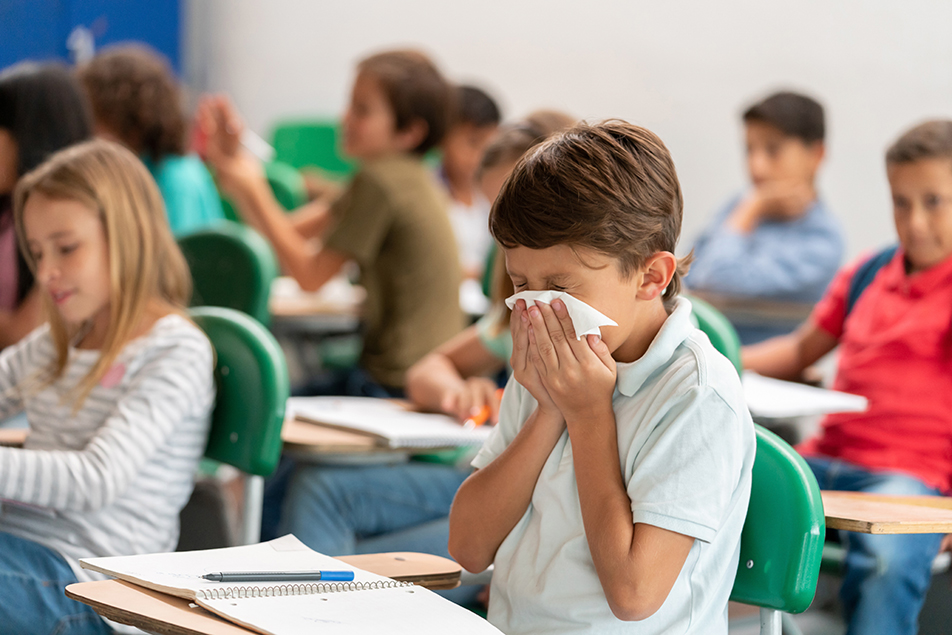
This post was written by Heather Willison, MSN, FNP-C, PPG – Allergy, Asthma and Immunology.
The start of the school year can be an anxious time for parents of children diagnosed with asthma, environmental allergies or a food allergy. It can be especially worrisome if the child is entering school for the first time or attending a new school. Partnering with your child’s school is important to ensure that their health does not prevent them from fully participating in academic and extracurricular activities.
Asthma and environmental allergies
According to the Centers for Disease Control and Prevention (CDC), asthma is a leading chronic illness among school-age children in the United States. Studies have shown that students with poorly controlled asthma often miss more school and are less successful academically than healthy students.
There are many potential allergy and asthma triggers within a school building, including chalk dust, classroom pets, dust mites, and mold. Avoidance of all triggers is not necessarily possible. However, as an example, if a child is allergic to guinea pigs a transfer to a pet-free classroom should be considered. Students may also spend much needed time outside during recess or gym, exposing them to pollens and outdoor molds. Not to mention physical activity possibly leading to exercise-induced asthma symptoms during recess and gym activities.
All students with asthma should have a rescue inhaler (albuterol or levalbuterol) on hand at school, as well as an Asthma Action Plan on file. This plan would outline what symptoms to watch for (ie. coughing, shortness of breath, chest tightness, or wheezing) and how and when to use the rescue inhaler. It would also state what to do if there does not seem to be a response to the rescue inhaler, as well as provide emergency contact information.
All students with asthma should have a rescue inhaler (albuterol or levalbuterol) on hand at school, as well as an Asthma Action Plan on file. This plan would outline what symptoms to watch for (ie. coughing, shortness of breath, chest tightness, or wheezing) and how and when to use the rescue inhaler. It would also state what to do if there does not seem to be a response to the rescue inhaler, as well as provide emergency contact information.
Food allergies
If your child has a food allergy, I cannot stress enough the importance of meeting with teachers, school nurses and dietitians prior to the start of the school year. Awareness is key when it comes to preventing accidental food allergy exposures. Students with food allergies should also have an Action Plan on file with the school. The Food Allergy Research & Education (FARE) website provides an excellent Action Plan that is used in many schools.
This plan should clearly state which foods must be avoided, what a reaction could look like (ie. hives, swelling of the lips or tongue, rash, difficulty breathing, vomiting, diarrhea, loss of consciousness, etc.), how to treat a reaction and emergency contact information. A fast-acting antihistamine, such as diphenhydramine, should be available, as well as injectable epinephrine. School personnel should be well-versed in how to administer these medications, if needed. If epinephrine is given to a student, the next step should be a 911 call to ensure safe transport to the nearest emergency room for further evaluation.
You are your child’s best advocate
Don’t hesitate to ask for meetings with key personnel within your child’s school. Educators, clinical staff and administrators are also invested in your child’s future and want to ensure their success. Planning ahead and creating partnerships within the school can help to create a safe and healthy learning environment for your student.



